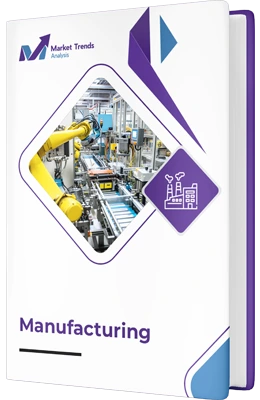
The 3D Printing Metals Market size was valued at USD 1.2 billion in 2024 and is projected to reach USD 4.8 billion by 2033, growing at a Compound Annual Growth Rate (CAGR) of approximately 19.5% from 2025 to 2033. This rapid expansion is driven by technological advancements, increasing adoption across aerospace, automotive, and healthcare sectors, and the rising demand for lightweight, high-performance metallic components. Industry-specific innovations and strategic market penetration initiatives are further fueling growth, positioning 3D printing metals as a cornerstone of advanced manufacturing ecosystems worldwide.
3D Printing Metals refers to the additive manufacturing process that fabricates three-dimensional metal objects by depositing successive layers of metal powder or wire, fused through techniques such as Selective Laser Melting (SLM), Electron Beam Melting (EBM), or Direct Metal Laser Sintering (DMLS). This technology enables the production of complex geometries, lightweight structures, and customized components with high precision and material integrity. Its application spans aerospace, automotive, medical implants, and tooling, revolutionizing traditional manufacturing paradigms. The process offers significant reductions in material waste and lead times, fostering sustainable and efficient production cycles. As industry standards evolve, 3D printing metals are increasingly integrated into mainstream manufacturing workflows, driven by innovations in material science and process control.
The 3D Printing Metals Market is witnessing transformative trends that are shaping its future trajectory. The integration of Industry 4.0 principles, such as IoT-enabled process monitoring and AI-driven design optimization, is enhancing manufacturing precision and efficiency. The adoption of hybrid manufacturing systems combining additive and subtractive methods is enabling complex part fabrication with superior surface finish. Additionally, the development of new alloy formulations tailored for additive processes is expanding application horizons. Sustainability concerns are prompting innovations in recyclable metal powders and energy-efficient printing techniques. Furthermore, increasing collaborations between OEMs and material suppliers are accelerating industry-specific innovations and regulatory compliance.
The growth of the 3D Printing Metals Market is primarily driven by the escalating demand for lightweight, durable, and complex metal components across various high-performance industries. The aerospace sector’s push for fuel-efficient, intricate parts, coupled with automotive’s shift towards electric vehicles, is fueling adoption. Increasing investments in R&D to develop new alloys and process innovations further propel market expansion. Regulatory frameworks emphasizing quality standards and safety are encouraging industry players to adopt certified additive manufacturing solutions. Moreover, the rising trend of on-demand manufacturing and supply chain resilience is making 3D printing metals an attractive strategic asset for global enterprises.
Despite its promising outlook, the 3D Printing Metals Market faces several challenges that could hinder its growth trajectory. High capital expenditure for advanced equipment and material costs remain significant barriers for widespread adoption, especially among small and medium enterprises. The lack of standardized quality assurance protocols and certification processes can impede regulatory approval and industry acceptance. Additionally, limitations in printing speed and scalability pose constraints for mass production. Material property inconsistencies and post-processing requirements further complicate integration into existing manufacturing workflows. Lastly, intellectual property concerns and cybersecurity risks associated with digital manufacturing data are emerging as critical issues.
The evolving landscape of 3D Printing Metals presents numerous opportunities for industry stakeholders. The development of cost-effective, high-performance alloys tailored for additive processes can unlock new application domains. Integration with emerging technologies such as artificial intelligence, machine learning, and digital twins offers avenues for process optimization and predictive maintenance. The expanding adoption in biomedical implants and personalized healthcare solutions presents significant growth potential. Furthermore, regional market expansion in emerging economies, supported by government incentives and industry collaborations, can accelerate adoption. Lastly, the shift towards sustainable manufacturing practices and recyclable materials aligns with global environmental goals, creating a competitive edge for eco-conscious players.
Looking ahead to 2026 and beyond, the 3D Printing Metals market is poised to revolutionize manufacturing ecosystems through smart, adaptive, and highly customized solutions. The integration of additive manufacturing with Industry 5.0 principles will enable seamless collaboration between humans and intelligent machines, fostering innovation in aerospace, healthcare, automotive, and energy sectors. Future applications will include self-healing metals, embedded sensors within structural components, and real-time process adjustments driven by AI analytics. As regulatory frameworks mature and material science advances, 3D printing metals will become central to sustainable, decentralized, and on-demand manufacturing models. This evolution will empower industries to achieve unprecedented levels of design freedom, operational efficiency, and environmental responsibility.
The 3D Printing Metals Market size was valued at USD 1.2 billion in 2024 and is projected to reach USD 4.8 billion by 2033, growing at a Compound Annual Growth Rate (CAGR) of approximately 19.5% from 2025 to 2033.
The growth of the 3D Printing Metals Market is primarily driven by the escalating demand for lightweight, durable, and complex metal components across various high-performance industries.
The Top players operating in the 3D Printing Metals Market Arcam AB (GE Additive), SLM Solutions Group AG, EOS GmbH, Markforged, Desktop Metal Inc., Renishaw plc, Trumpf GmbH + Co. KG, 3D Systems Corporation, Materialise NV.
3D Printing Metals Market is segmented based on Material Type, End-Use Industry, Process Type And Geography.
The sample report for the 3D Printing Metals Market can be obtained on demand from the website. Also, the 24*7 chat support & direct call services are provided to procure the sample report.